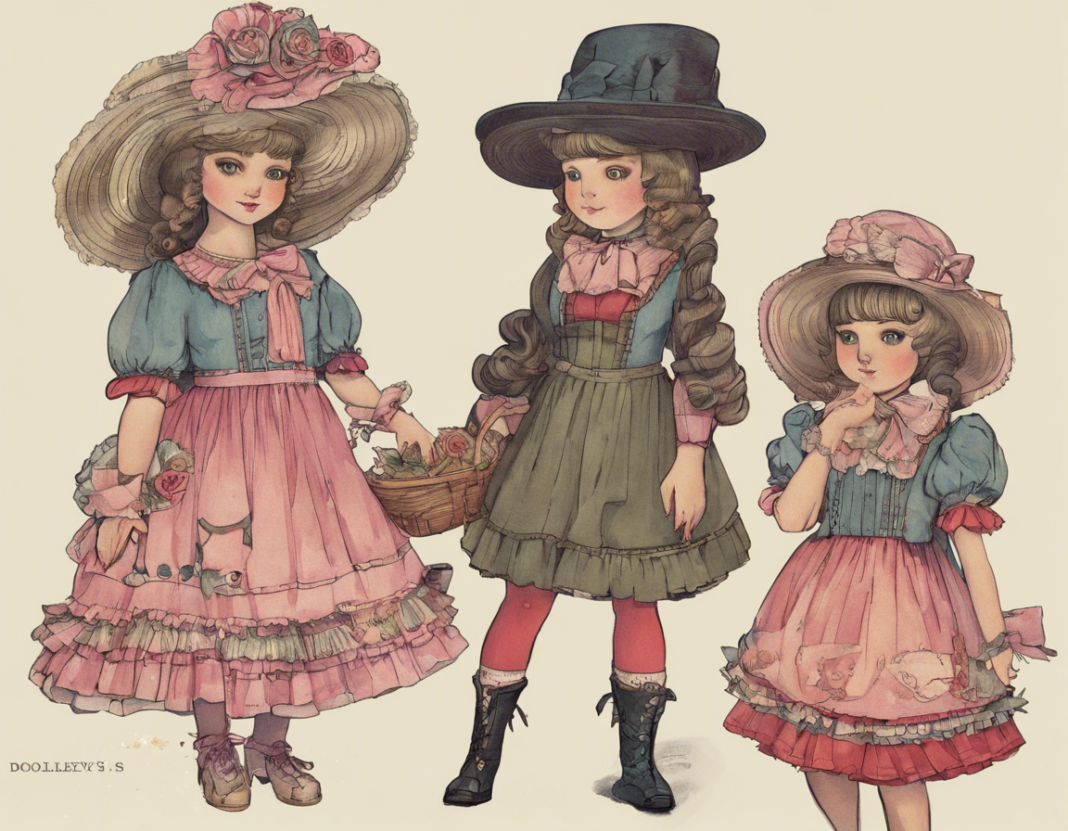Fashion has always been a reflection of societal norms, values, and trends. In the 19th century, a period marked by significant changes in technology, politics, and culture, fashion underwent a dramatic transformation. One of the prominent styles of the time was the Dolley fashion, named after Dolley Madison, the fashionable First Lady of the United States from 1809 to 1817. This guide offers a comprehensive overview of Dolleys and their significance in 19th-century fashion.
The Rise of Dolley Fashion
In the early 19th century, Dolley Madison’s fashion choices became the epitome of style and elegance. Dolley was known for her preference for bold colors, intricate embroidery, and regal silhouettes. Her influence extended beyond the political sphere, as women sought to emulate her sophisticated style. The Dolley fashion trend was characterized by:
- Empire Waist Dresses: Dolley favored dresses with high empire waistlines that accentuated the upper body and created a long, flowing skirt.
- Rich Fabrics: Silks, satins, and brocades were popular choices for Dolley dresses, adding a touch of luxury to the ensemble.
- Elaborate Trimmings: Lace, ribbons, and embellishments were used to adorn dresses, creating a sense of opulence and femininity.
- Hats and Accessories: Dolley often wore large hats adorned with feathers, flowers, and ribbons, adding drama to her outfits.
Key Elements of Dolley Fashion
1. Silhouettes
The Dolley fashion era favored soft, flowing silhouettes that emphasized the natural curves of the body. Empire waistlines, puffed sleeves, and voluminous skirts were key elements of this style.
2. Colors and Fabrics
Rich, vibrant colors such as deep blues, emerald greens, and ruby reds were popular in Dolley fashion. Fabrics like silk, satin, and velvet added a touch of luxury to the garments.
3. Hairstyles
Women in the Dolley era often wore their hair in loose curls or elaborate updos, adorned with ribbons, combs, and feathers to complement their outfits.
4. Accessories
Accessories played a significant role in Dolley fashion. Women adorned themselves with gloves, parasols, fans, and jewelry to complete their ensembles.
The Legacy of Dolley Fashion
Dolley Madison’s influence on 19th-century fashion extended far beyond her time in the White House. Her bold style choices and flair for the dramatic left a lasting impact on fashion trends of the era. The Dolley fashion trend captured the essence of the early 19th century, blending elegance, sophistication, and a touch of opulence.
Frequently Asked Questions (FAQs)
1. What is the origin of the term “Dolley” fashion?
The term "Dolley" fashion is derived from Dolley Madison, the fashionable First Lady of the United States from 1809 to 1817, known for her elegant and sophisticated style.
2. What were the key characteristics of Dolley fashion?
Dolley fashion was characterized by empire waist dresses, rich fabrics like silk and satin, elaborate trimmings, and dramatic accessories such as large hats and feathers.
3. How did Dolley fashion influence 19th-century trends?
Dolley Madison's fashion choices set the tone for 19th-century fashion by popularizing empire waistlines, bold colors, and intricate embellishments that epitomized elegance and sophistication.
4. What type of accessories were popular during the Dolley era?
Accessories such as gloves, parasols, fans, and jewelry were popular among women during the Dolley era, adding a finishing touch to their ensembles.
5. Is Dolley fashion still relevant today?
While the Dolley fashion trend may not be as prominent today, elements of 19th-century fashion, such as empire waistlines and rich fabrics, continue to influence modern designs and styles.
In conclusion, Dolley fashion remains an enduring symbol of elegance and sophistication in 19th-century fashion. The legacy of Dolley Madison’s style continues to inspire designers and fashion enthusiasts, reminding us of the timeless allure of classic silhouettes, rich fabrics, and bold color choices.


